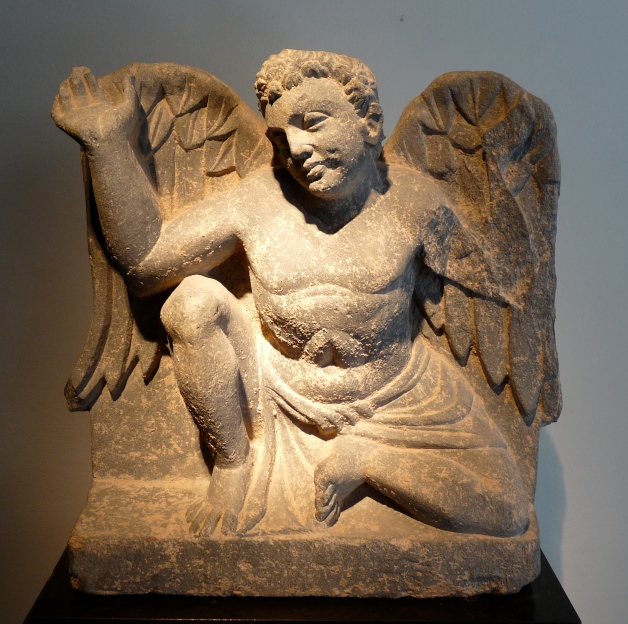We often think of international trade and cross cultural influences as relatively modern phenomenon, boosted dramatically by the new sea routes between Western Europe and Asia in the early modern period. This, somehow, is particularly true with India – we British almost seem to think of ourselves as the first to ‘discover’ Indian culture in the nineteenth century, when the extensive operations of the East India Company bought great interaction between the two nations. However, trade (and colonial tensions) between Asia and Europe stretches back into the ancient world, with the armies of Alexander the Great reaching India in 327–326 BC. This early interaction between India and the Classical world resulted in the sophisticated school of Gandharan sculpture, which drew inspiration from the remarkable naturalism of contemporary Greek works. This example, an elegant Atlas figure, offered by Luc Decruyenaere, Brussels, shows how subject as well as style travelled from Europe to Asia. Not only do the sensitive modelling of the torso and the naturalistic calm of the face suggest a link with Ancient Greece, the idea of anthropomorphic figures supporting architectural elements is also decidedly classical.
Even in the modern era the British were not the first to establish colonies in India, with the Portuguese first arriving in Goa at the tail end of the fifteenth century, over a hundred years before the first British boats reached the region. Although the Portuguese were primarily interested in the large profits of the spice trade, they also had a secondary interest in converting the population. As a result, local sculptors were called upon to create items for Christian worship, which drew upon established European models. This exquisite ivory carved figure of Christ, offered by Ben Janssens at this year’s TEFAF, belongs to this tradition. The form is instantly recognisable as a piece of Christian iconography, but the style, with the delicate, almond-shaped eyes, and stylised, curling beard betrays it’s more Eastern origin.